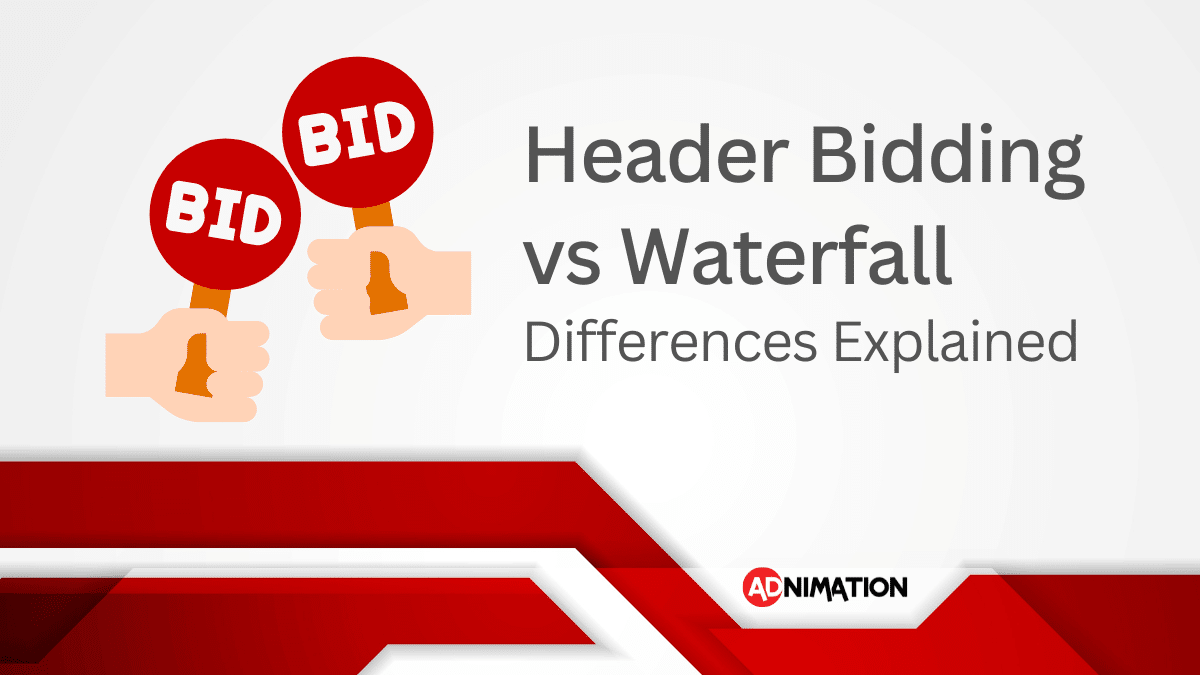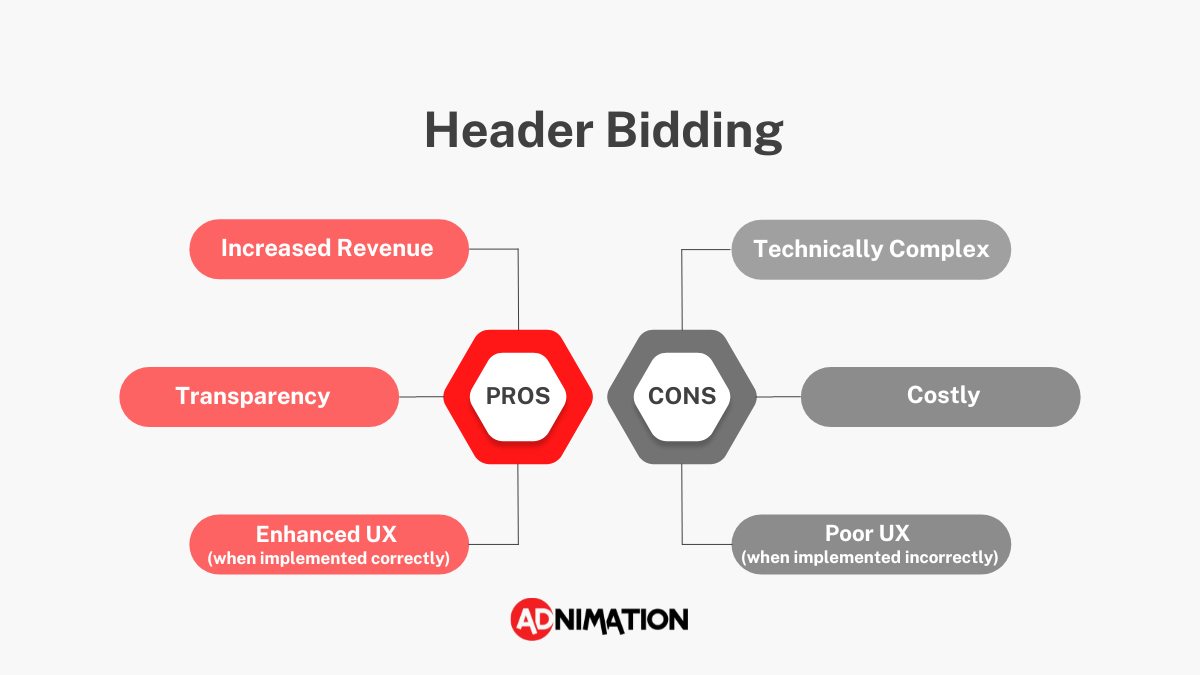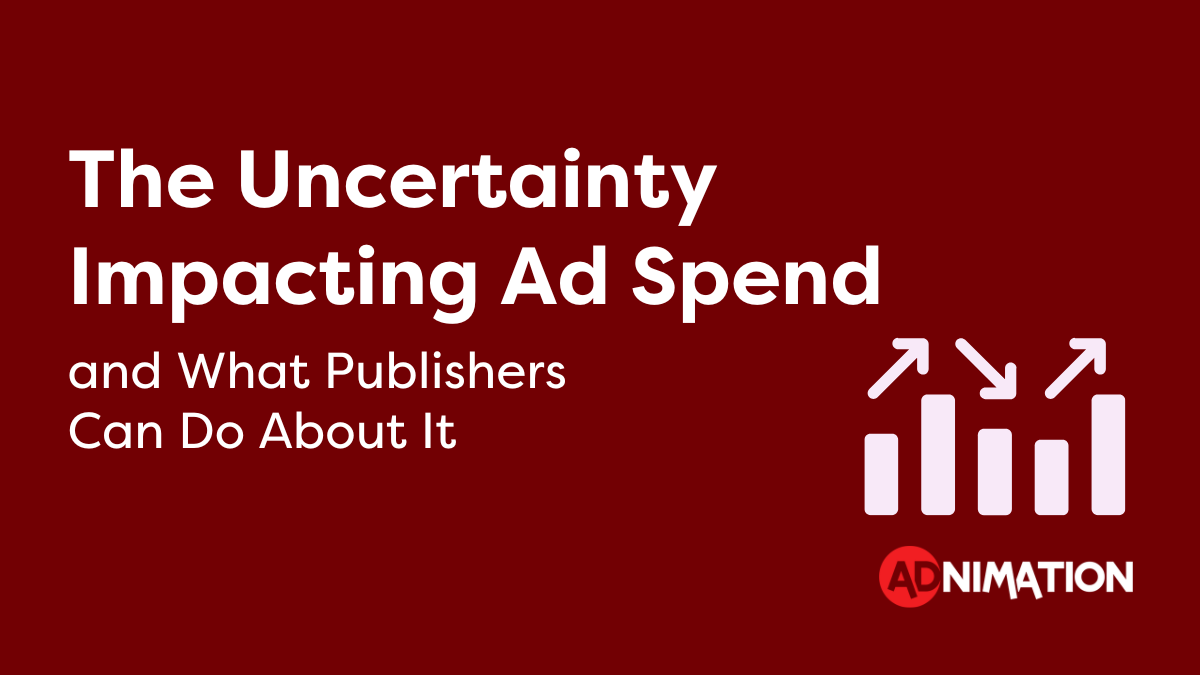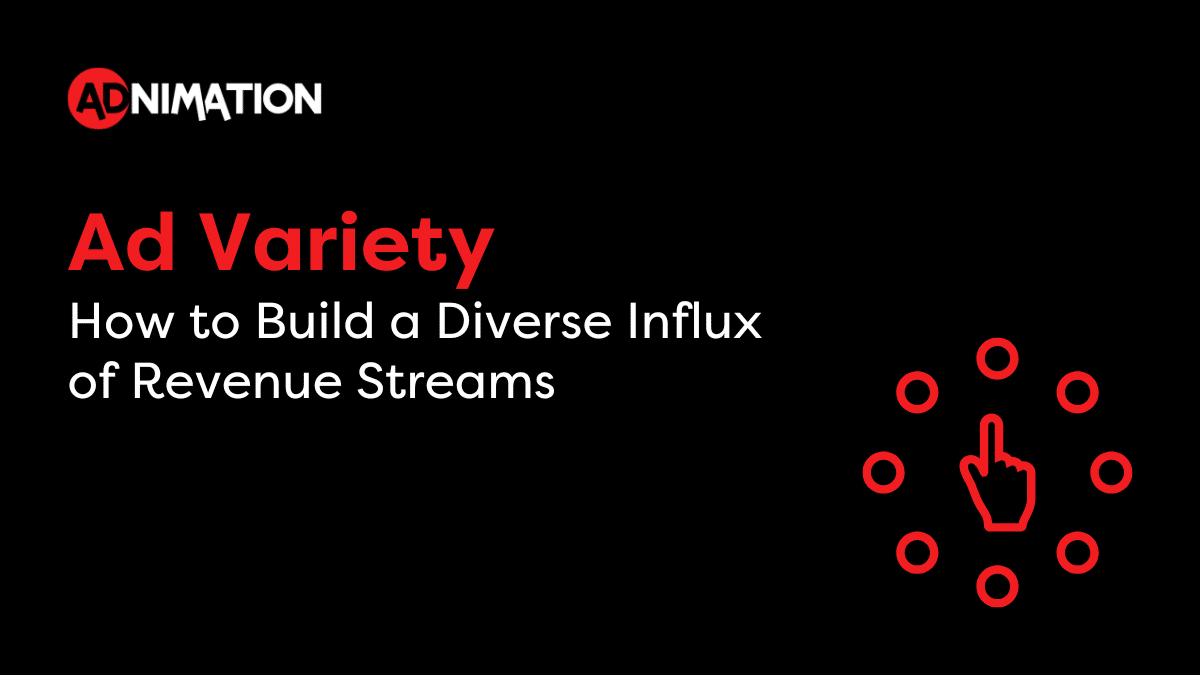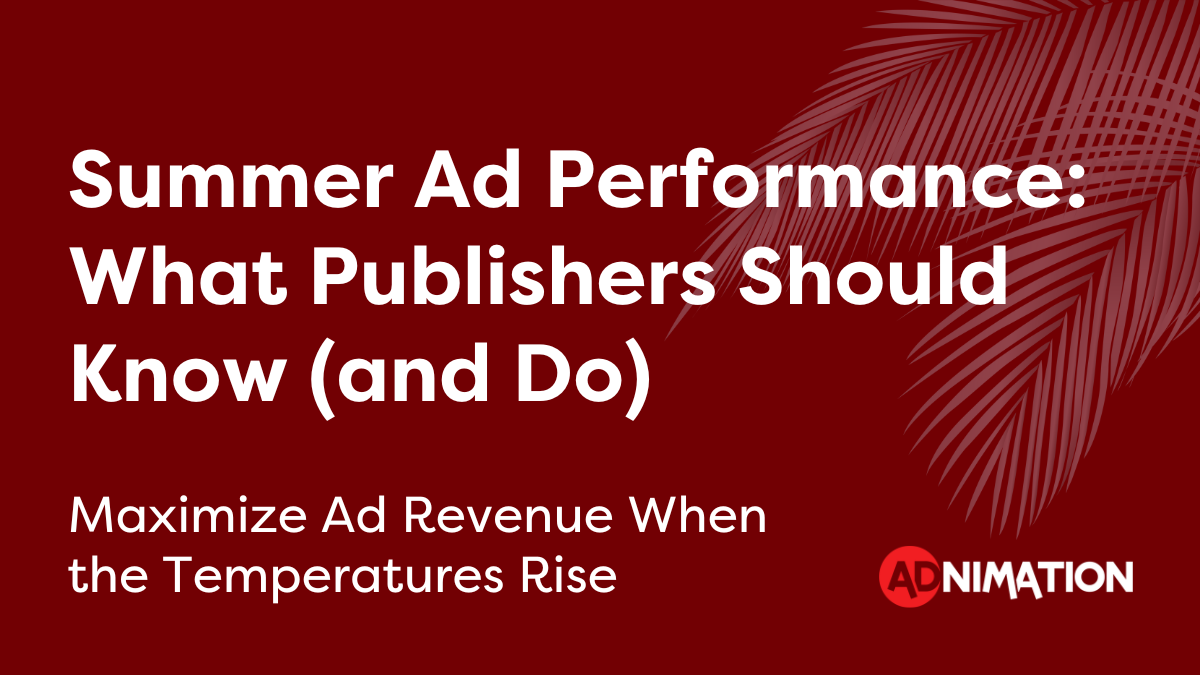If you’re here, it’s likely because you have heard the terms header bidding and waterfall tossed around as methods to optimize your ad revenue.
Header bidding, the successor to the less effective programmatic waterfall, is an absolute must for publishers.
In this article, we’ll explain everything you need to know about the two, including how to best optimize your header bidding.
What Is a Programmatic Waterfall?
A programmatic waterfall is similar to an auction in which certain bidders get first dibs at bidding.
In the waterfall model, ad requests are sent to a single SSP, also known as a demand partner.
If that demand partner doesn’t fill the ad request, it then passes to the next demand partner in line, who has an opportunity to fill the ad slot. And so on and so forth.
Programmatic Waterfall Advantages and Disadvantages
Advantages
- It allows publishers to sell remaining ad inventory
- The setup is relatively simple
Disadvantages
- No real-time bidding, which creates a lack of competition and lower prices
- Relies on historical pricing data, which doesn’t always yield the best results for publishers
- Limited transparency
- Lower fill rates
- Higher latency
What is Header Bidding?
Header bidding emerged as a response to the limitations of the waterfall model.
With header bidding, publishers can offer their inventory to multiple demand partners simultaneously in a process known as real-time bidding.
This allows advertisers to bid over a publisher’s inventory in real-time, increasing competition and driving higher prices for publishers.
How Does Header Bidding Work?
Header bidding works by placing a piece of code, known as a header bidding wrapper, in your website’s header (hence the name).
Here’s how it works:
- When a user visits your website, the wrapper sends out an ad request to all of your available demand partners.
- Each demand partner assesses the ad request and replies with their respective bid for the ad space.
- The ad server selects the highest bid and serves the ad to the user.
Despite the complexity of this process, it all occurs within a fraction of a second, allowing for a seamless user experience.
Header Bidding Advantages and Disadvantages
Advantages of Header Bidding
- Higher revenue potential: Due to increased competition, header bidding generates more revenue than a waterfall.
- More transparency: Header bidding provides more transparency in the ad bidding process, as all demand partners have an equal opportunity to bid on the ad space.
- Better user experience: When implemented correctly, header bidding is much better for your page speed than a waterfall.
- Higher fill rates: Increased competition means that more advertisers are bidding for your space, which leads to higher fill rates.
Disadvantages of Header Bidding
- Technically complex: Header bidding demand more technical knowledge to implement than a waterfall.
- Poor user experience (if implemented incorrectly): Without proper implementation, header bidding can lead to high latency.
- Higher costs: Conducting in-house server-to-server header bidding (see below) can be costly as it requires additional server resources.
Do Publishers Still Use Waterfall?
Let’s hope not!
We aren’t aware of any publishers still using a programmatic waterfall. But if you happen to be one of them, we advise switching to header bidding ASAP.
While there is a wide data-backed consensus that header bidding is superior, there is a still a large debate over which type of header bidding will deliver the best results.
Types of Header Bidding
There are three different types of header bidding: client-side, server-to-server (S2S), and hybrid header bidding.
Client-Side Header Bidding
Client-side header bidding refers to a process where the bidding takes place within the user’s web browser.
Publishers make this possible by incorporating JavaScript code into their website, which offers up their available ad space to potential buyers in real time.
The main advantage of client-side is that it provides access to browser cookies. This allows advertisers to serve more personalized ads, which generally results in higher CPMs.
The biggest disadvantages to client-side header bidding are potential latency issues (as the bidding occurs on the user’s browser) and the limited number of demand partners.
Server-to-Server Header Bidding
With server-to-server header bidding, the bidding process taking place on a separate, external server.
In this approach, publishers house their ad space on an external server, providing access to it for demand partners via an Application Programming Interface (API).
As the auction process occurs on an external server and not within the user’s browser, S2S is much quicker and it enables you to add many more demand partners.
On the downside, the lack of access to browser cookies limits the ability to serve more targeted ads to users.
Here’s a more detailed comparison between client-side and server-to-server header bidding.
Hybrid Header Bidding
As both client-side and S2S header bidding have their own pros and cons, our monetization experts developed a unique hybrid header bidding solution.
Adnimation’s hybrid header bidding utilizes the high CPMs of client-side and the speed and high fill rates of S2S.
This winning combination ensures that publishers are generating high CPMs and aren’t missing out on bidders due to high latency.
So… What’s Best for Me?
Waterfalls had their moment in the sun, but header bidding is far more effective.
The only question remains is what type of header bidding will deliver you the best results.
According to our research, hybrid header bidding outperforms standard header bidding by 18%. So we of course recommend going with hybrid header bidding as your solution.
As a Google Certified Publishing Partner (GCPP) / Google AdX partner, Adnimation has years of experience implementing header bidding as well as a bevy of other solutions to help publishers grow.
To learn more about how we can help, please contact us today.

